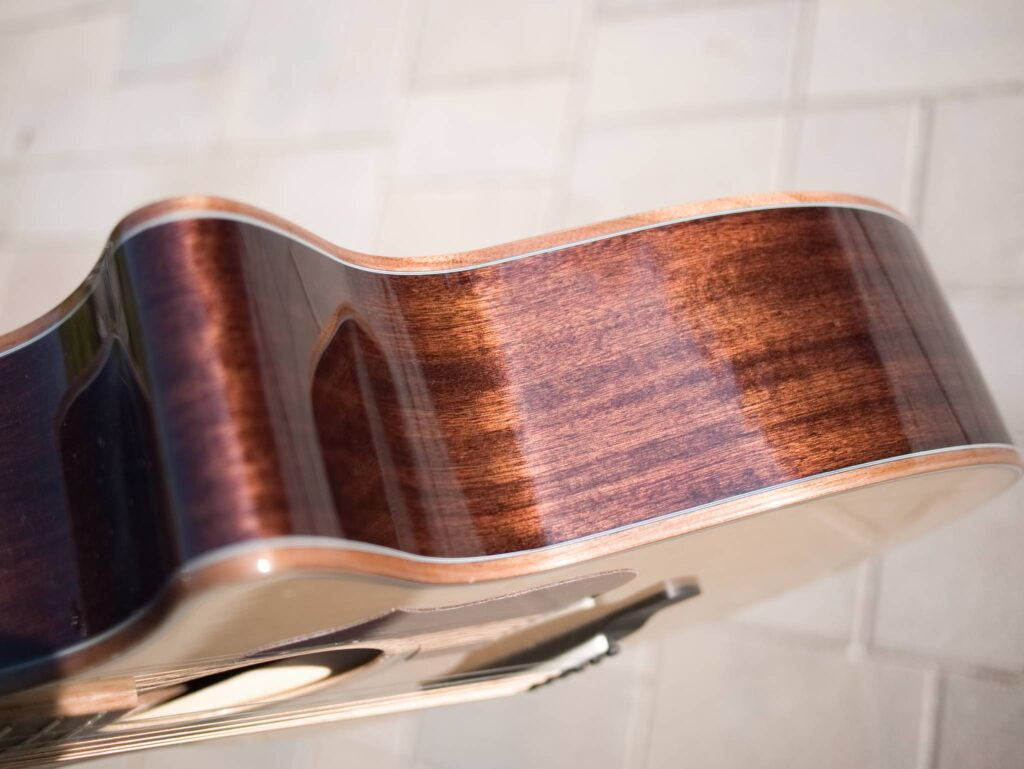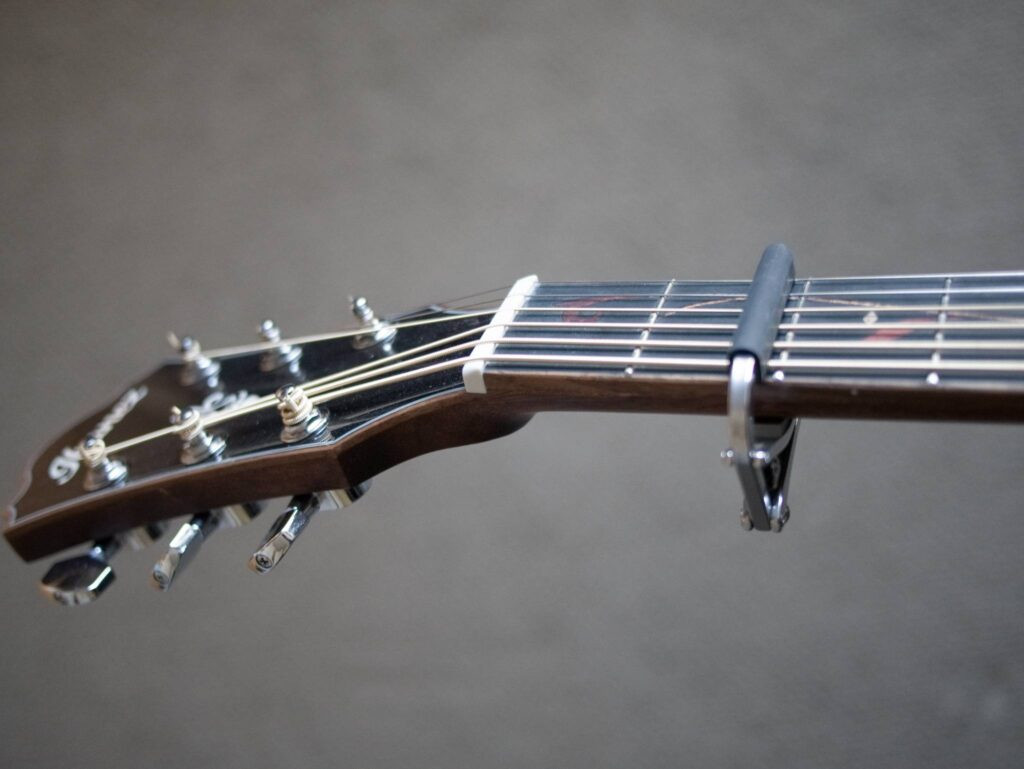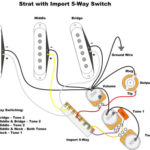For vocalists with a deeper register or guitarists seeking a richer, darker tonal palette, the baritone guitar presents a compelling option. Stepping into the world of baritone acoustics for the first time, I was intrigued by the possibilities it offered, particularly for expanding my vocal range and adding depth to my songwriting. My quest for the perfect baritone led me to the Ibanez AE255BT baritone guitar, an instrument that promised to bridge the gap between affordability and quality. This review delves into my experience with the AE255BT, exploring its features, playability, sound, and whether it lives up to the hype as a versatile tool for guitarists and singer-songwriters alike.
What exactly is a baritone guitar? Essentially, it’s an acoustic guitar with a longer scale length, typically ranging from 27 to 30 inches, and tuned lower than a standard guitar. The most common tuning is B-E-A-D-F#-B, a perfect fourth lower than standard E-A-D-G-B-e tuning. This lower tuning gives baritone guitars a deeper, richer, and often more resonant sound, making them particularly appealing for genres like folk, blues, metal, and fingerstyle guitar. For singers like myself, who sometimes find standard guitar tunings clashing with their vocal range, a baritone offers a comfortable and inspiring alternative.
My journey to finding the right baritone guitar involved some initial exploration. Local guitar stores offered limited options. I encountered a used Taylor 8-string baritone, a beautiful instrument, but its price point was significantly higher than I was aiming for as a first foray into baritone guitars. The doubled octave strings also felt somewhat specialized for my needs, which were geared more towards general singer-songwriter applications. An Alvarez baritone I tested was unfortunately in poor condition, a testament to the trials instruments endure in busy retail environments. Despite these initial setbacks, these experiences confirmed my interest in the baritone concept and that the 27-inch scale length, while requiring adjustment, was manageable.
Turning to online retailers, Sweetwater became my resource, leading me to a choice between another Taylor baritone and the Ibanez AE255BT. The Taylor, again, was a premium option, and the Ibanez AE255BT presented a more accessible and intriguing alternative. Lacking the ability to play either in person, Sweetwater’s return policy provided reassurance. The Ibanez AE255BT, with its cutaway and more favorable price, won out as the instrument to experiment with. Browsing Sweetwater’s inventory, I selected a model with an appealingly book-matched top and visually striking back.
Upon arrival, the Ibanez AE255BT immediately impressed with its aesthetics. The solid spruce top, paired with laminate Ovangkol back and sides and walnut binding, creates a visually appealing and tonally promising combination. The nyatoh neck felt comfortable in hand, and the blackened maple fretboard, a unique touch I hadn’t encountered before, was adorned with an intricate vine and leaf wood inlay. While the inlay might lean towards ornate, its subtlety allowed it to grow on me.
The attention to detail extends to the abalone rosette surrounding the soundhole and the classy headstock design, featuring a simple Ibanez logo and a decorative inlay. The nut and saddle are crafted from bone, a premium touch often found on higher-end instruments, contributing to improved tone and sustain.
 Ibanez Ae255bt 4
Ibanez Ae255bt 4
The Ovangkol back and sides are truly captivating. In the right light, the Ovangkol exhibits a beautiful three-dimensional quality, adding depth and visual interest to the instrument. The sides, with their straight, even grain, resemble mahogany, offering a familiar and comfortable aesthetic.
 Ibanez Ae255bt 7
Ibanez Ae255bt 7
The neck boasts a smooth satin finish, enhancing playability and comfort. The neck profile is not overly thick, making it accessible for players accustomed to standard acoustic guitars.
Equipped with an under-saddle piezo pickup and an endpin jack, the Ibanez AE255BT is stage-ready. It is powered by two CR2032 batteries and, notably, omits an onboard tuner. The piezo pickup delivers a serviceable sound, typical of piezo systems – functional for amplification, though perhaps not the most nuanced acoustic tone.
Overall, the Ibanez AE255BT excels in both cosmetics and build quality, presenting an instrument that looks and feels well-crafted.
Out of the box, the guitar’s playability was decent, but not perfect. The action was a tad high, and the intonation exhibited slight inconsistencies on a few strings. The factory setup included D’Addario EXP23 coated baritone strings (.016, .022, .029, .048, .060, .070). These are substantial gauges, yet surprisingly, the longer 27-inch scale length and lower tension prevent them from feeling overly cumbersome. Barre chords at the first fret remain challenging, but overall, the hand fatigue associated with playing a baritone was less pronounced than anticipated.
The truss rod, accessible through the soundhole, functioned effectively, allowing for some action adjustment. However, it seemed to reach maximum tension before achieving my preferred string height. The intonation issues were more concerning, requiring saddle and nut adjustments for proper correction. Compounding this, the D’Addario EXP23 strings appeared to be scarce, potentially discontinued, necessitating a string change and further intonation work. Elixir 16-70 Nanoweb strings, with slightly different gauges (.016, .022, .030, .047, .059, .070), are a likely alternative, but will definitely require intonation adjustments.
Sonically, the Ibanez AE255BT delivers the darker tonal character expected from a baritone guitar. It inherently sounds deeper than a standard 25-inch scale acoustic. Strumming typical open-position chords can result in a muddier sound. This characteristic encourages a rethinking of fingerings and voicings to maximize clarity and articulation. Playing the baritone involves a fascinating perceptual shift. Initially, after playing standard guitars, the baritone can sound dark or muddy. However, after a few minutes of playing, it begins to sound natural and “right”. Conversely, switching back to a standard-tuned guitar can then make it sound overly bright and high-pitched. The distinct voices of standard and baritone guitars create interesting possibilities for layering in recordings and performances.
The true versatility of the baritone guitar emerges when using a capo. Capoing at the 5th fret effectively raises the tuning to standard E-to-E pitch. For vocal covers, I find capo positions at the 4th (Eb) and 2nd fret (Db) particularly useful.
 Ibanez Ae255bt With Capo
Ibanez Ae255bt With Capo
For example, tackling Stone Temple Pilot’s “Plush,” a song previously requiring detuning and still straining my vocal range, becomes effortless with the baritone capoed at the 2nd fret. Singing in this lower register feels significantly more comfortable and powerful.
My Shubb Deluxe capo proves to be the most effective with the Ibanez AE255BT, providing even tension and minimizing tuning problems. While my preferred D’Addario tri-action capo offers convenient single-handed operation, it unfortunately pulls the strings unevenly on the baritone, causing tuning inconsistencies. Personal preference also dictates capo placement on even-numbered frets for visual familiarity with fretboard markers.
Playing the Ibanez AE255BT is a unique and rewarding experience. While my Taylor acoustic possesses a brighter, more shimmering quality that the Ibanez lacks, the baritone excels in its depth and lower register capabilities. For dedicated instrumental playing, my Taylor remains my preference. However, for vocal performances and songwriting, the Ibanez AE255BT baritone guitar, with its capo versatility, offers exceptional flexibility and vocal confidence. It’s become my go-to instrument when singing takes center stage, while the Taylor remains my choice for purely instrumental exploration.
Pros:
- Attractive aesthetics and quality workmanship
- Comfortable neck profile
- Solid spruce top and Ovangkol tonewoods
- Versatile for lower vocal ranges and deeper tones
- Good value for the price
Cons:
- Initial setup may require adjustments (action and intonation)
- Piezo pickup sound is functional but not exceptional
- D’Addario EXP23 strings may be difficult to find
Conclusion:
The Ibanez AE255BT baritone guitar is a well-crafted and sonically intriguing instrument that offers a gateway into the world of lower-tuned guitars without breaking the bank. While it may require some setup adjustments to optimize playability, its rich tone, comfortable neck, and stage-ready features make it a compelling choice, especially for singer-songwriters and guitarists seeking to expand their sonic palette and vocal range. If you’re curious about exploring the depths of baritone guitar territory, the Ibanez AE255BT is certainly worth considering.

